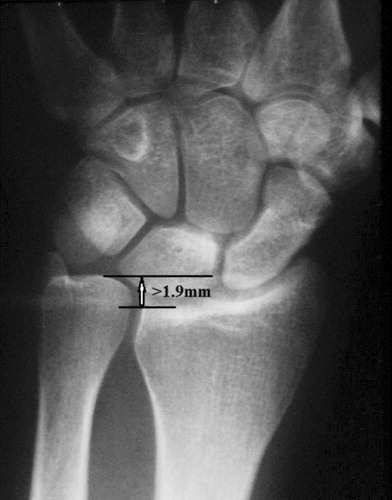Figures & data
Figure 1. An Essex-Lopresti lesion was diagnosed in this patient's radiographs, which demonstrated greater than 2 mm of shortening of the ipsilateral radius when compared to the contralateral side.

The degree of radial shortening measured on bilateral wrist radiographs, categorized by fracture complexity according to the Mason classification
Figure 2. Initial presentation AP and lateral radiographs of a 27-year-old male who sustained a Mason type-I fracture of the left elbow while playing sport. An Essex-Lopresti lesion was diagnosed at 2 weeks when bilateral wrist radiographs were taken. Management was conservative, using collar and cuff immobilization for 1 week followed by supervised physiotherapy. At 6 months, the patient had a flexion arc of 152 degrees and a forearm rotation arc of 180 degrees, with an excellent MES (100).
